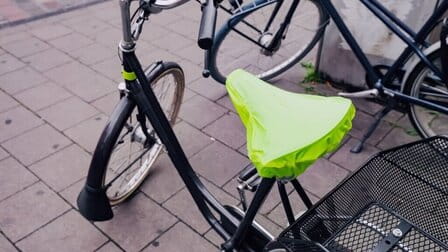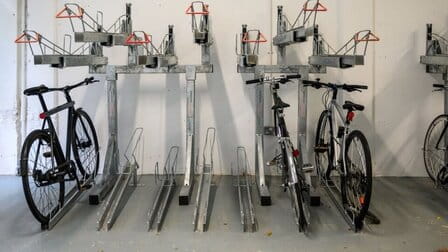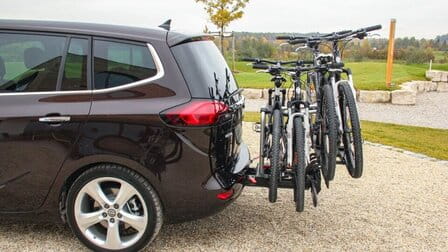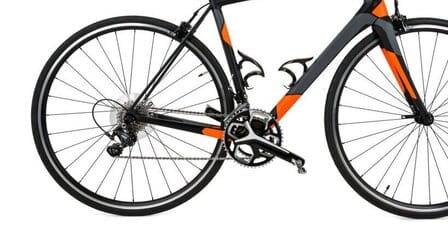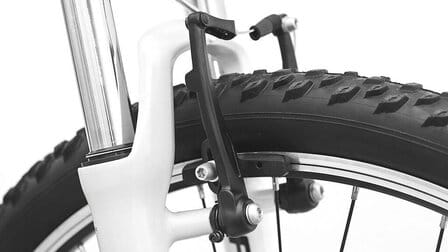Bike tires are the unsung heroes of cycling. They bear the weight of the rider and bike, grip the road or trail, and influence the overall ride quality. While we often focus on tire size, tread pattern, and tire pressure, there's another critical element that deserves our attention: the valve. Bike tire valves might seem like a minor detail, but they play a crucial role in tire inflation, maintenance, and even customization. In this in-depth guide, we'll take a deep dive into the world of bike tire valves, exploring the different types available, their advantages, disadvantages, and how to make the right choice for your cycling needs.
Understanding the Importance of Bike Tire Valves
Before we delve into the specific types of bike tire valves, let's understand why they matter. At their core, valves are the gatekeepers of your tire's air supply. They determine how you inflate your tires, how you maintain their pressure, and even how you customize your ride. Here are some key reasons why bike tire valves are essential:
Inflation: Valves are the entry point for air into your tires. The valve type dictates the type of pump or inflator you can use, affecting the ease and efficiency of inflation.
Pressure Maintenance: Proper tire pressure is critical for performance, safety, and comfort. Valves should allow for precise pressure adjustments and secure sealing to prevent air loss.
Compatibility: Different types of bikes and rims may require specific valve types. Understanding valve compatibility is essential to ensure your tires work with your equipment.
Customization: Some valve types, like Presta valves, offer customization options such as valve extenders and colored valve caps, allowing riders to personalize their bikes.
Performance: In high-performance cycling, the choice of valve can impact aerodynamics, especially on deep-section rims. A streamlined valve can reduce air resistance.
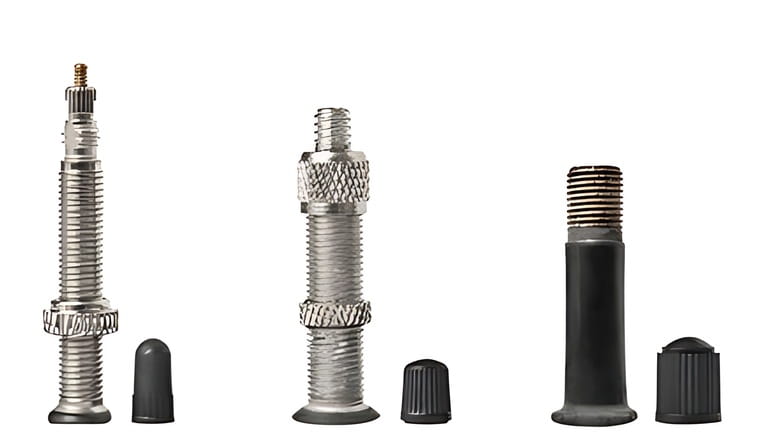
Different Types Of Bike Tire Valves
Now that we appreciate the importance of bike tire valves, let's explore the various valve types available:
1. Presta Valve
Design: The Presta valve, also known as the French valve or Sclaverand valve, is easily recognizable by its slender, elongated shape. It features a narrow metal body with a knurled nut at the top. The valve has a screw-on top that seals it, preventing air from escaping.
Use: Presta valves are commonly found on road bikes, high-performance mountain bikes, and many modern hybrid and commuter bikes. Their design makes them ideal for high-pressure applications, and they are often used with narrow, high-pressure tires.
Advantages:
- Suitable for high-pressure tires commonly used in road cycling.
- Lightweight design.
- Compatible with narrow rims due to their slim profile.
Disadvantages:
- Requires a specific Presta-compatible pump or an adapter for regular pumps.
- The narrow valve can be more susceptible to damage.

2. Schrader Valve
Design: The Schrader valve, also known as the American valve, is the same type of valve found on car tires. It has a wider and more robust construction compared to Presta valves. Schrader valves feature a central pin that can be depressed to allow air in and out.
Use: Schrader valves are commonly found on mountain bikes, hybrid bikes, kids' bikes, and even some urban and commuter bikes. They are known for their durability and ease of use.
Advantages:
- Compatible with most bike pumps, as well as gas station air pumps, making them convenient for inflation.
- Durable and less prone to damage compared to Presta valves.
- Commonly used in a variety of applications, making replacement parts readily available.
Disadvantages:
- Heavier than Presta valves and may not be suitable for high-performance racing bikes.
- Have a lower pressure capacity compared to Presta valves.

3. Woods Valve (Dunlop Valve)
Design: The Woods valve, also known as the Dunlop valve or English valve, has a unique, old-school appearance. It features a wider body with a central pin that can be depressed for inflation.
Use: While not as common as Presta or Schrader valves, Woods valves are still found on some older bicycles and in specific regions. They are known for their simplicity and ease of use.
Advantages:
- Easy to use and inflate.
- Suitable for a wide range of applications and tire types.
Disadvantages:
- Less common, which may make finding replacement tubes or pumps a challenge.
- Not well-suited for high-pressure tires used in road cycling.

4. Tubeless Valve
Design: Tubeless valves are designed exclusively for tubeless bike tires. They come in both Presta and Schrader variations but are characterized by their longer stems and a rubber grommet that creates an airtight seal.
Use: Tubeless valves are used exclusively for tubeless tire setups, which have gained popularity in recent years due to their ability to reduce flats and improve ride quality.
Advantages:
- Ideal for tubeless tire setups, which provide increased puncture resistance and the ability to run lower pressures for better traction.
- Can be used with a wide range of tubeless-ready rims.
Disadvantages:
- Require a tubeless-ready tire and rim.
- May require the use of sealant to maintain airtightness.

5. Regina Valve
Design: The Regina valve is a rare and vintage valve type. It features a cylindrical metal body with a rubber gasket at the base. A threaded collar secures it in place.
Use: Regina valves were once common on older road and racing bikes, but they have become exceedingly rare in modern cycling.
Advantages:
- None of note, as they are largely obsolete and not suitable for modern cycling applications.
Disadvantages:
- Extremely difficult to find replacement parts or tubes.
- Not suitable for high-pressure tires or tubeless setups.

6. Valve Extenders
Valve extenders are not a distinct valve type but rather an accessory used to make shorter valves compatible with deeper rims. They are commonly used with Presta valves on deep-section aero rims.
Choosing the Right Valve for Your Bike
The choice of valve largely depends on the type of bike you ride and your cycling preferences. Here are some considerations to help you make the right decision:
1. Bike Type: Consider the type of bike you ride. Road bikes and high-performance mountain bikes often use Presta valves, while mountain bikes, hybrids, and some urban bikes use Schrader valves.
2. Rim Compatibility: Check your bike's rims. Some rims are drilled for Presta valves, while others accommodate Schrader valves. Choose a valve type that matches your rim's drilling.
3. Pressure Requirements: If you ride a road bike and require high tire pressures, Presta valves are better suited to handle the task. Schrader valves may not be ideal for high-pressure road tires.
4. Convenience: Schrader valves are more convenient when it comes to finding compatible pumps, especially in remote areas where bike-specific pumps might not be readily available.
5. Tubeless Setup: If you're running tubeless tires, you'll need tubeless valves. Ensure your valve type matches your rim's requirements.
6. Personal Preference: Some cyclists prefer the aesthetics of one valve type over another. Presta valves, for example, offer customization options like valve extenders and colored valve caps.

Conclusion
Bike tire valves may be small, but they play a significant role in your cycling experience. Understanding the different valve types, their advantages, and limitations will help you make informed decisions about which valves are right for your bike and riding style. Whether you're a road cyclist chasing speed, a mountain biker seeking durability, or a commuter valuing convenience, the right valve can make a noticeable difference in your rides. So, take the time to get to know your valves and keep those tires rolling smoothly.




